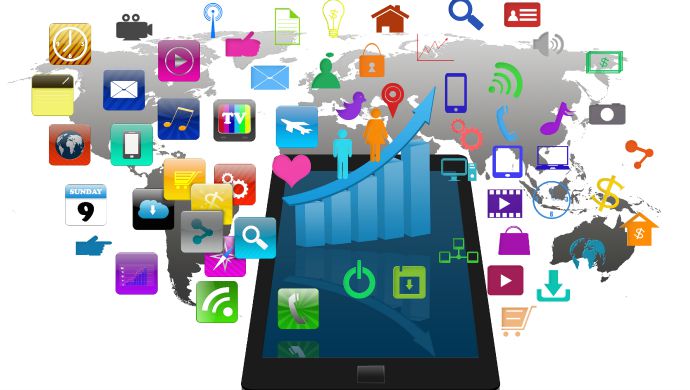Technology is changing quickly, opening up new methods for tracking our success and identifying user pattern and choices more closely. Analytics have always played an important role for both marketers and developers in understanding user behavior online. The valuable data that we get from mobile analytics simply cannot be ignored, it is something that can not only save you a lot of time as either a developer or a marketer but can also give you accurate numbers on performance statistics.

The Growing Superiority of Mobile Devices:
One of the reasons why mobile phones are overtaking PCs in almost all core aspects-performance, reliability, portability, and versatility – is because manufacturers continue to produce mobile devices whose hardware and software superiority continues to progress steadily with every new launch. For instance, 2016 saw the launch of a smartphone with a RAM of 6GB.
Such memory, when coupled with a powerful processor and graphics engine, many of which already exist, has the ability to run some of the most resource-intensive utility, productivity, and even game applications.2015 marked the introduction of 4K video and display units on mobile devices. With the right applications to power such hardware, professionals are finding them, and may other value addition features on mobile devices reasons enough to abandon PCs.
Therefore, it is easy to understand why according to a 2014 research by comScore, as reported in CNN Money, revealed that mobile apps had overtaken PC internet usage in the U.S. for the first time in history. In the report, mobile devices accounted for over 55 percent of internet usage, while mobile apps scooped 47 percent of all internet traffic, while PCs took a 45 percent share.
There’s never been a better time (than now) for developers, marketers, and business owners to collect user data from mobile device users, in order to place themselves in the market strategically by offering personalized services and products, with insight derived from users’ behavior on their mobile devices.
Benefits of Mobile Data Analytics to Corporates’ Human Capital Management:
Mobile data analytics is evolving fast. It is no longer only about knowing your customer’s shopping trends, figuring out what to sell to who, or which age group prefers what products. Corporates are also jumping into the analytics wagon fast, and they are right to do so because of the immense untapped potential of mobile app analytics.
A 2014 report by PWC shed new light on how corporates can leverage on the power of mobile analytics to boost “hiring, engaging, and enabling a highly-skilled, competitive work force”. The same report cites another 2012 report by Forrester Research in which 64 percent of the respondents involved in the study stated that they use smartphones at their office desks. This is proof of just how much mobile devices have become integral to most activities in our daily lives.
In another joint survey by Google and Forbes Insights in 2013, the business executives interviewed expressed their confidence in the full adoption of mobile devices as their primary business platforms by 2016. This statistics simply mean that smartphones usage has rapidly evolved to incorporate work-related tasks. Employees will use the devices for checking work-related emails while at the same time, many admit to the use of the same gadgets to access their popular social media sites.
On one end of the spectrum, these mixed indulgences in the workplace can seem detrimental to employee productivity, but on the extreme end, they offer invaluable insights that organizations can use to maximize the output of employees. The PWC report illustrates this concept further. One of the current challenges in managing human capital is that of assigning job responsibilities to employees based primarily on job title and experience, with little or no regard for individual employee aspirations.
Mobile data analytics can solve this problem by creating “digital avatars” for employees who may have multiple persona in the workplace. The avatars are useful tools in revealing employee personal experiences and aspirations, which can hint on the possibility of an organization’s staff succeeding in other roles that were previously not even considered.
Some organizations that incentivize employees employ a one-size-fits-all approach to issues benefits, rewards or recognition. The problem with this approach is that not all employees will be equally motivated. Insights derived from mobile device usage behaviors of employees can help organizations to offer targeted benefits such as flexible schedules, child and health care, and travel rewards, based on their staff’s unique needs.
Here’s quick practical scenario to illustrate the concept further: A company that monitors the mobile phone usage patterns of its employees may discover, through analytics, that some are big fans of online video streaming, while others prefer to read most of their content through the devices. How can a company utilize such data to improve employee training programs? It’s quite simple: those who prefer streaming videos can be offered video-based WebEx training, while written material can be provided to those who prefer reading. This is, of course, bound to yield better training outcomes than when a single unified approach is used.
Benefits of Mobile Data Analytics to Marketing, Commerce, and Consumer Engagement:
1. Dependable accurate data and precise ROI calculation: With 1.6 million and 1.5 million applications in Android’s Google Play Sore and Apple’s App Store respectively, we are looking at a very competitive apps market. In such an environment, it’s near suicidal to ignore how different marketing channels are performing, what kind (active or inactive) of following you are getting and from where.
For example, using mobile analytics, if I see that I am getting good traffic from Facebook and YouTube then I would start prioritizing and optimizing my communications for these channels as they are producing positive feedback from users.
The data that we get from Analytics is both real-time and accurate. Most users are non-technical and may not readily decipher any meaning from the data. App analytics can be used to understand and learn more about our ideal users –identifying their requirements and increasing interactions. For instance, using app analytics error reporting I can pinpoint which part of my application is causing problems and fix it within minutes.
2. Customer-focused marketing: App Analytics allow us to understand customer behavior by giving us filtered data on customer experiences right after a marketing campaign or customized push messages. Push messages in general are very important for marketing as they can double and sometimes triple the amount of active users in no time. Once you have App analytics integrated you acquire a better understanding of how effective your marketing campaigns were and which ones you should continue on.
3. A better understanding of Retention and Attrition rates: Applications with higher engagement rates (e.g. social Networking apps) enjoy much higher customer retention. But to get to an effective engagement rate we must have enough customers that are loyal and frequent users of our app. App analytics are used by both developers and marketers to retain customers by understanding their interests and knowing where and at what point customers are stopping to use the application. This data is very helpful in securing loyal customers and reducing attrition rates
In conclusion, it is clear that in modern day, mobile devices are at the core of all our daily formal and informal engagements. The amount of data exchanged, processed, and stored on mobile devices is immense and performing analytics on this data can offer valuable insights into user behavior, and other personal preferences that influence the personal, professional, and work-related decisions we make. It’s worth noting that gathering the data is just one half of the puzzle. The other half is analyzing it carefully for reporting purposes and for creation of actionable output. As we move deeper into mobile analytics, organizations and business should equip themselves with the necessary tools, if needed by taking guidance from technology consulting companies, to harness the immense power of analytics and apply it in accelerating business growth.










Comments